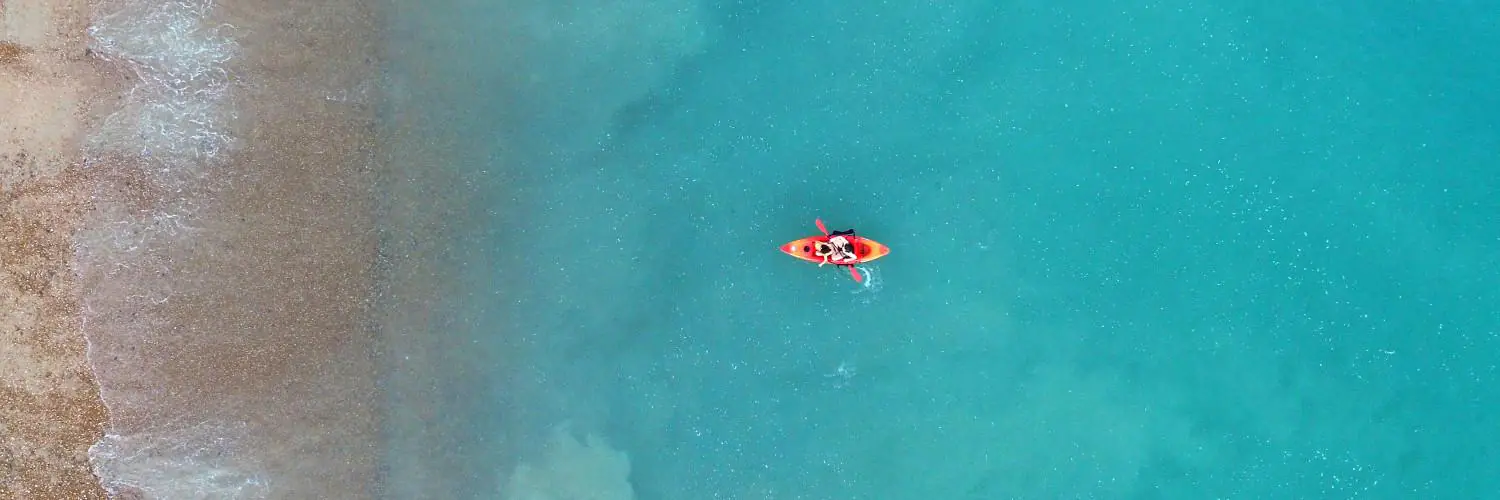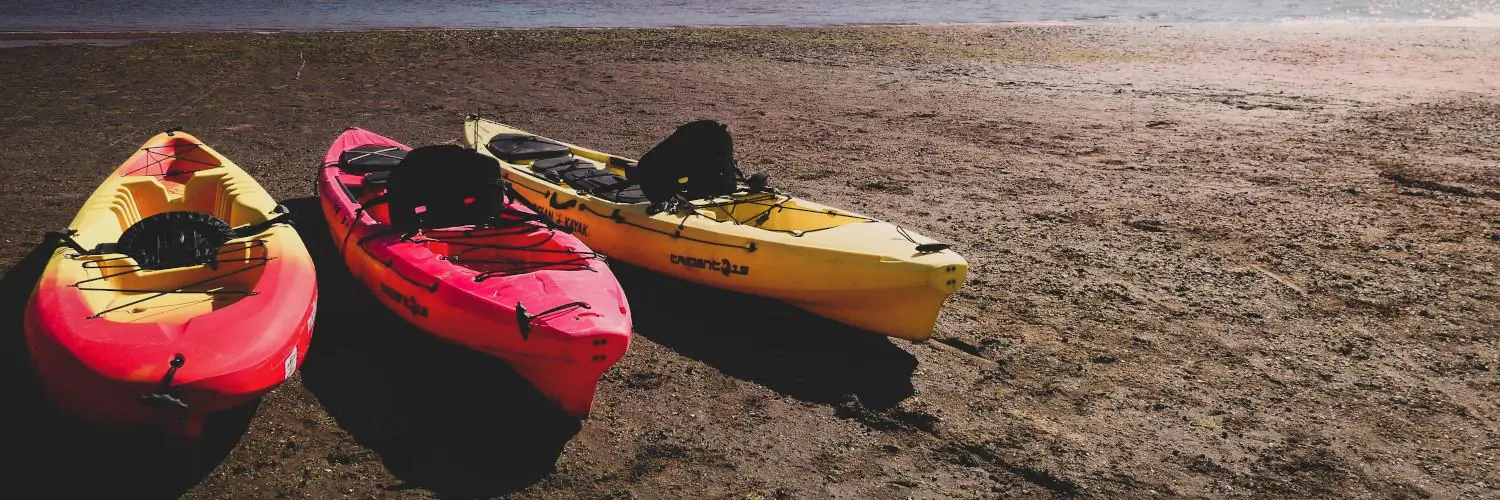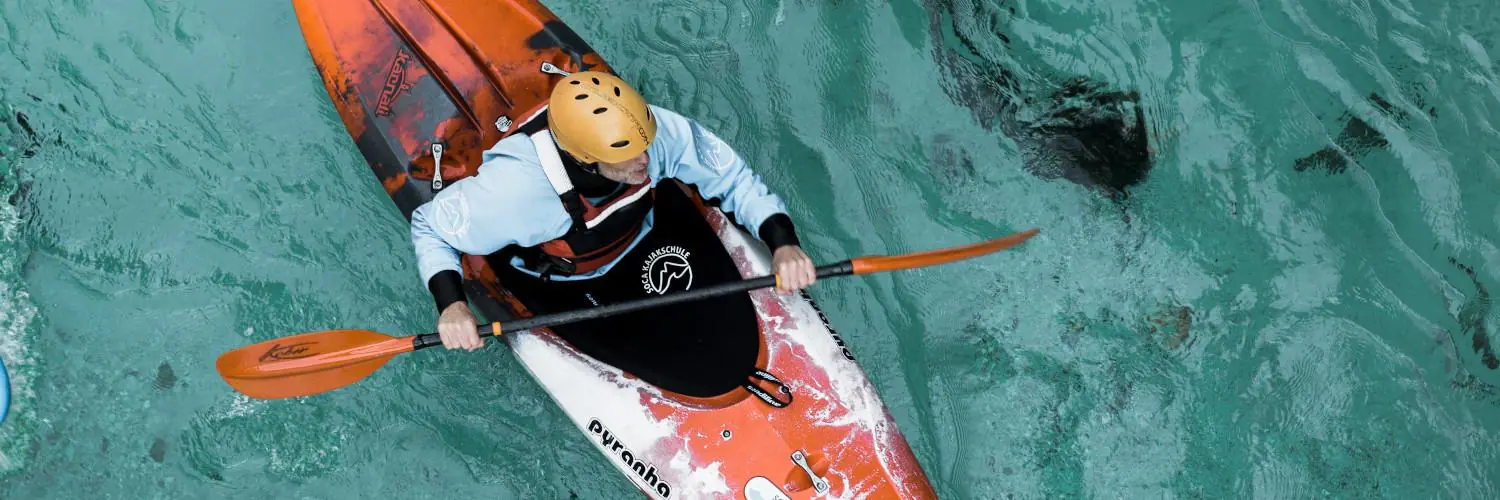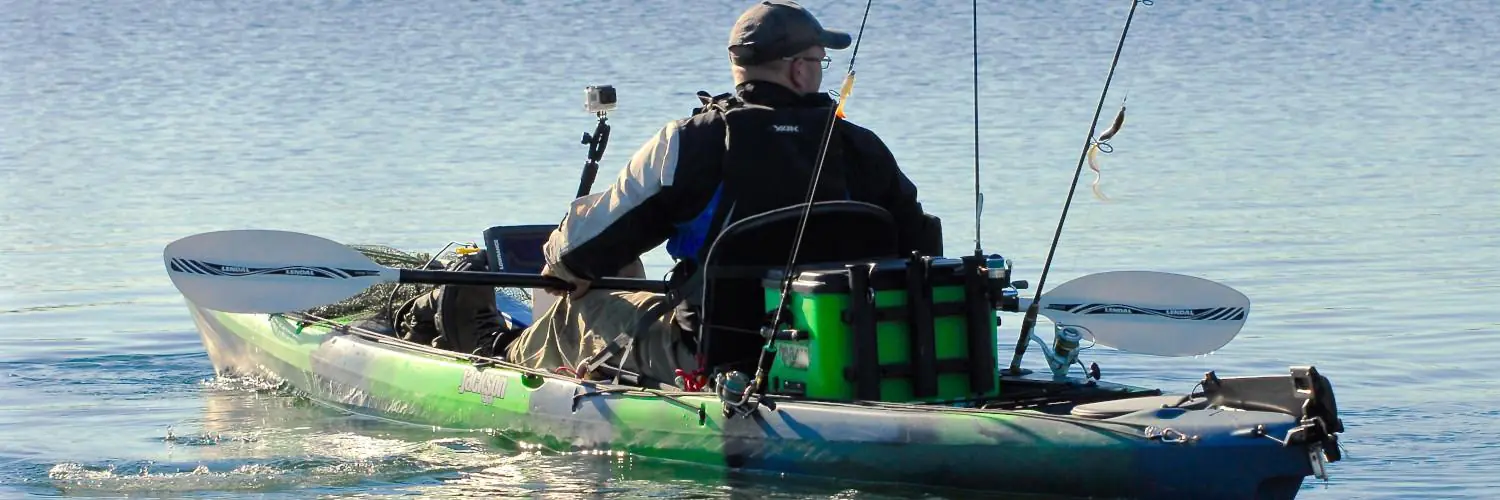Kayaks are fun, but storing them can be a challenge. Many people keep their kayaks in the garage to save space at home. There are several good ways to hang kayaks in a garage that protect the boats and free up floor space.
The best ways to hang kayaks in a garage include ceiling hoists, wall-mounted racks, and hanging straps. These methods keep kayaks off the ground and out of the way. They also help prevent damage from impacts or moisture.
Proper kayak storage is important to maintain the boat’s shape and condition. Hanging systems spread the kayak’s weight evenly and protect it from warping. With the right storage solution, kayakers can easily access their boats when it’s time to hit the water.
Table of Contents
Assessing Your Space and Storage Needs
Proper kayak storage starts with a good look at your garage and kayak specs. This lets you pick the best spot and method to keep your boat safe and easy to access.
Determining Available Space
Start by measuring your garage. Check the height, width, and depth. Look for open wall areas and unused ceiling space. Count how many kayaks you need to store. Think about other items you keep in the garage too.
Make a simple sketch of your garage layout. Mark spots that might work for kayak storage. Consider different options like wall-mounted racks, ceiling hoists, or freestanding racks. Each takes up space in different ways.
Don’t forget to leave room to move around. You’ll need space to take your kayak in and out. A clear path from storage to the garage door is key.
Understanding Kayak Dimensions and Weight
Get the exact size and weight of your kayak. Measure its length, width, and height. Write down how much it weighs. This info helps you pick the right storage option.
Most kayaks are 10 to 14 feet long. They can weigh 20 to 80 pounds. Wider kayaks need more wall space. Heavier ones need stronger supports.
Check the kayak’s shape too. Some have special features that affect storage. Rudders or skegs might need extra care. Think about how the kayak’s curves will fit against a wall or in a rack.
Match your kayak’s specs to your garage space. This helps you choose between vertical or horizontal storage. It also guides you in picking the right type of rack or hoist.
Choosing the Right Storage Solutions
Picking the best kayak storage option for your garage depends on space, budget, and how often you use your kayak. The right solution keeps your kayak safe and your garage tidy.
Wall-Mounted Kayak Racks
Wall-mounted racks are great space-savers. They keep kayaks off the floor and out of the way. These racks come in different sizes and styles.
Some hold one kayak, while others can store multiple boats. Most use padded arms or straps to cradle the kayak and prevent damage.
Installation is key. Make sure to secure the rack to wall studs for proper support. This prevents accidents and keeps your kayak safe.
Wall-mounted racks are ideal for garages with limited floor space. They also make it easy to grab your kayak and go.
Freestanding Kayak Racks
Freestanding racks offer flexibility. You can move them around your garage as needed. These racks don’t require wall mounting, which is good for renters.
Many freestanding racks can hold multiple kayaks. This makes them perfect for families or kayak collectors.
Look for racks with adjustable arms. This lets you fit different kayak sizes and shapes. Sturdy bases prevent tipping.
Some racks have wheels for easy moving. This is handy if you need to rearrange your garage often.
Portable Stands and Overhead Systems
Portable stands are simple and budget-friendly. They cradle your kayak near the ground. This makes loading and unloading easy.
Stands are great for quick storage between trips. They’re also good for kayak maintenance.
Overhead systems use your garage’s ceiling space. Pulley systems let you raise and lower your kayak with ease.
These systems keep kayaks high and dry. They’re perfect for rarely used boats or tight spaces.
Make sure your garage ceiling can support the weight before installing. Always follow safety guidelines when using overhead systems.
Installation Techniques and Considerations
Proper installation is key for safely hanging kayaks in your garage. The right tools and methods ensure your kayak stays secure and undamaged.
Stud Finder Usage and Mounting Hardware
A stud finder is essential for locating strong support beams in your garage walls or ceiling. Once you find a stud, mark its location clearly. Use heavy-duty mounting hardware rated for the weight of your kayak.
Lag bolts or wood screws work well for most garage setups. Make sure to drill pilot holes first to prevent wood splitting. For added strength, use washers with your bolts or screws.
Choose corrosion-resistant hardware like stainless steel or galvanized materials. This prevents rust and ensures long-lasting support for your kayak.
Setting Up Pulley Systems and Tie-Down Straps
Pulley systems offer an easy way to raise and lower kayaks. Install pulleys into ceiling joists or wall studs for maximum strength. Use a double-pulley system for better control and less effort when lifting.
Select strong, weather-resistant rope for your pulley system. Nylon or polyester ropes work well and resist stretching over time.
Tie-down straps with D-rings provide secure attachment points for your kayak. Place straps at the bow and stern of the kayak for balanced support. Adjust strap tension to cradle the kayak without putting too much pressure on the hull.
Check your pulley system and straps regularly for signs of wear. Replace any frayed ropes or worn straps promptly to maintain safety.
Protecting Your Kayak While Stored
Proper storage keeps your kayak in top shape. Shielding it from harmful elements and maintaining ideal conditions are key steps to extend its life.
Covers and UV Protection
A good kayak cover is crucial. It guards against dust, debris, and harmful UV rays. Choose a cover made of durable, water-resistant material. Make sure it fits snugly over your kayak’s entire body.
For extra protection, use a cockpit cover. This stops water, insects, and small animals from getting inside. It also helps keep the inside dry and clean.
Before storing, clean your kayak. Remove dirt, salt, and grime. This stops damage over time. Use mild soap and water, then dry it well.
UV rays can fade and weaken your kayak’s material. Store it away from direct sunlight. If that’s not possible, use a UV-resistant cover.
Managing Temperature and Humidity
Extreme temps and moisture can harm your kayak. Aim for a cool, dry spot in your garage.
High heat can warp plastic kayaks. Cold can make them brittle. Keep the storage area between 40°F and 80°F if possible.
Humidity leads to mold and mildew. Use a dehumidifier in damp areas. This pulls moisture from the air.
Check your kayak often. Look for signs of mold, warping, or cracking. Address any issues quickly to avoid worse damage.
If your garage gets very hot or cold, consider indoor storage. A spare room or basement might work better.
Maintenance and Care for Stored Kayaks
Proper care keeps your kayak in top shape while it’s stored in your garage. Clean your kayak before hanging it up. Use mild soap and water to remove dirt and salt.
Dry the kayak completely to prevent mold growth. Pay extra attention to crevices and storage compartments.
Check your kayak’s straps and wall hooks regularly. Make sure they’re not worn or loose. Replace them if needed to keep your kayak secure.
Protect your kayak from sunlight and heat. Cover it with a breathable tarp if it’s near a window.
Inspect your kayak for cracks or damage every few months. Small issues can grow if left unchecked.
Consider rotating your kayak’s position periodically. This helps prevent stress on specific areas.
Keep the area under your hanging kayaks clear. This prevents accidents if the kayak falls unexpectedly.
Store paddles and gear separately to reduce weight on the kayak. Use dedicated hooks or racks for these items.
By following these steps, you’ll keep your kayak ready for your next adventure on the water.








